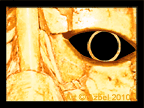
Maya: Secrets of their Ancient World
Opens November 19
Their history is shrouded in mystery.
Their civilization guided by the stars.

(Justin Jennings/Royal Ontario Museum)
A trove of Mayan artifacts, including treasures only recently unearthed, are traveling to Canada for the exhibition Maya: Secrets of their Ancient World.
The show — an exploration focusing on the ancient civilization's classic period (from 250 to 900 AD) — is a collaboration between Toronto's Royal Ontario Museum, the Canadian Museum of Civilization in Ottawa and Mexico's National Institute of Anthropology and History (INAH).
Mexico is a popular tourist destination for Canadians, but our visits are often limited to the country's beaches, with perhaps a side trip to Tulum or Chichen Itza, according to Justin Jennings, one of the exhibition's curators.
"It's more than the Mayan Riviera. It's more than Cancun. Those places are wonderful, but there's also this vibrant culture."
The exhibit will spotlight nearly 250 artifacts — including ceramics, sculptures, masks and other valuable pieces — drawn largely from Mexico's Yucatan Peninsula, but also from Honduras, Guatemala and Belize.
Among the highlights will be "monumental" findings recently excavated by Mexican archeologists who continue to research the ancient Mayans in places like the Palenque site in southern Mexico. These objects have rarely been seen elsewhere and never before in Canada, according to Miriam Kaiser, director of exhibitions at Mexico's INAH.
Specific focus
The show's Canadian and Mexican curators chose to focus specifically on the Maya, a Mesoamerican civilization that has captured the imagination of many people for its accomplishments in art, architecture, mathematics, language and astronomy — including its fabled calendar scheduled to end in 2012.
"The Maya aren't easy. You look at some of the artifacts — they might look really cool, but you don’t know what the heck’s going on," Jennings said.
"Sometimes you have to go beyond the artifacts themselves to explain the culture."
For instance, "2012 is just the end of the biggest cycle of time that the Maya had. There was no association between the end of a cycle of time and the end of the world," he explained.
"The Maya celebrated these cycles and when they were concluded — to the best that we know — they probably would have had a big party."
Because of the great interest in the year 2012, the exhibit will include a section exploring the Mayan calendar and the significance of the date, Jennings said.
Though fewer in number, the Maya people continue to exist today. But exploring their ancient heritage can still inform and enlighten us — in environmental matters, for example, or when looking at urban planning, according to Jennings.
"There are a lot of reasons why we might still care, for instance, Mayan urbanization. They were able to sustain, in one region, populations that we're only now beginning to match. They had these light urban centres with forest gardens. They managed their fields in ways that we can still learn from," he said.
Maya: Secrets of their Ancient World opens at the Royal Ontario Museum on Nov. 19 and runs through April 9, 2012. It then travels to the Canadian Museum of Civilization, where it runs May 18, 2012 to October 28, 2012.

The exhibit will include nearly 250 artifacts representing ceramics, sculptures, masks and other precious works,
including this lidded Maya vessel featuring an iguana, jaguar, and human hybrid figures.
(Conaculta-INAH/Martirene Alcantara/Royal Ontario Museum)
credit: CBC news



















































































































































































































0 comments:
Publicar un comentario